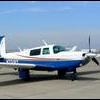How does a Mooney fly if the prop comes off?
-
Members Online
- TangoTango
- ArtVandelay
- aviatoreb
- N201MKTurbo
- Wes
- Danb
- NMMooneyPilot
- Nathan211
- Mister_Bevilaqua
- Parker_Woodruff
- kortopates
- 1980Mooney
- hammdo
- ad5ut
- eman1200
- Denise
- raymondscott0321
- ReboTim
- ta2too
- Mcstealth
- natdm
- Abe Frowman
- Greg Ellis
- NickG
- 1967 427
- georgewdean1020
- Guillaume
- bluehighwayflyer
- Lax291
- Aerodon
- TCC
- tcal780
- IvanP
- 201Mooniac


Recommended Posts
Join the conversation
You can post now and register later. If you have an account, sign in now to post with your account.